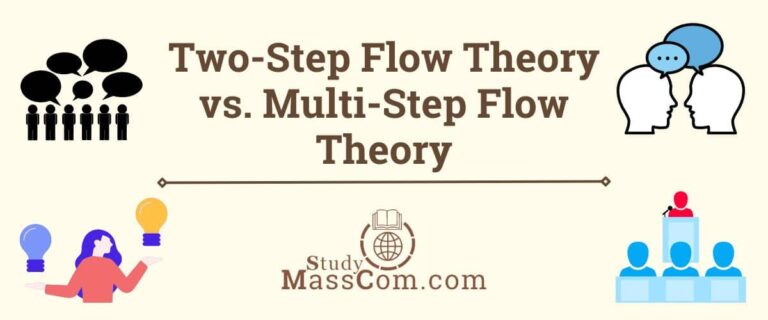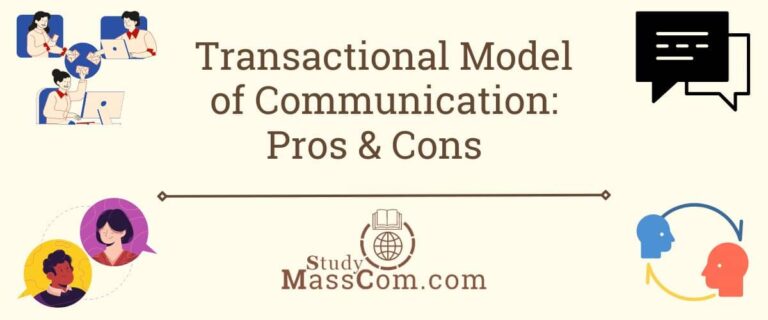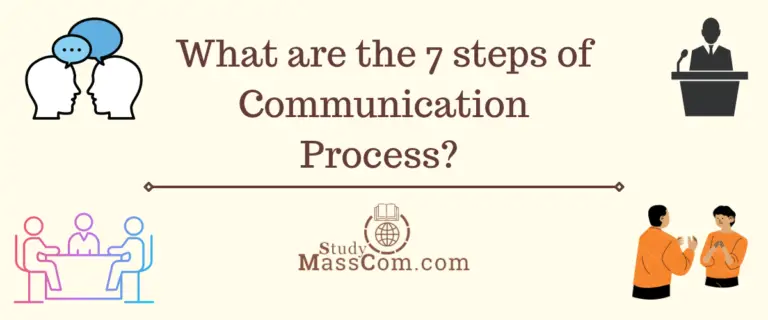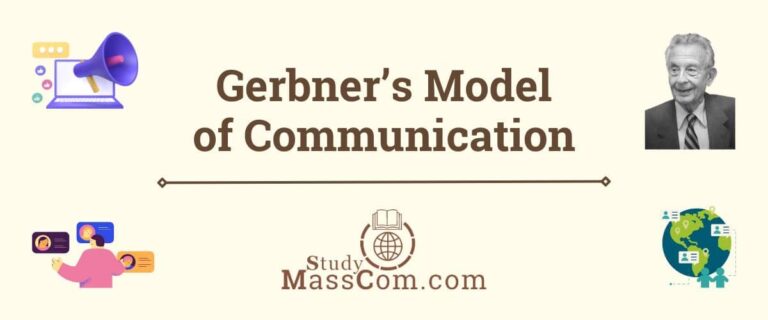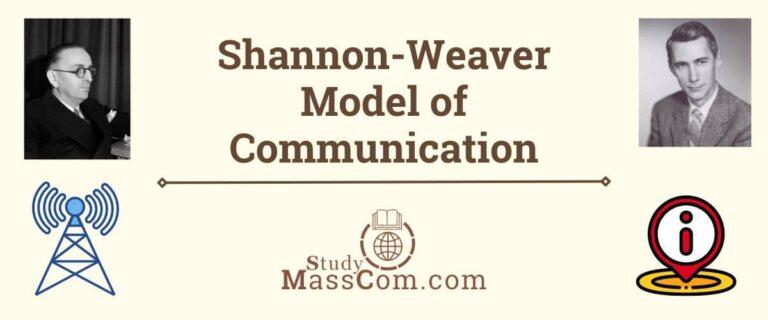Newcomb’s ABX Model of Communication: Advantages & Disadvantages
Communication is the cornerstone of human interaction, facilitating the exchange of ideas, emotions, and information. Over the years, numerous models have been proposed to understand and analyze the complexities of communication processes. One such model that has garnered attention in the field of interpersonal communication is Newcomb’s ABX model. Developed by Theodore M. Newcomb, this model provides a comprehensive framework for understanding the dynamics of communication interactions. In this article, we will delve into the intricacies of Newcomb’s ABX model, exploring its key components, theoretical foundations, applications, and relevance in contemporary contexts.
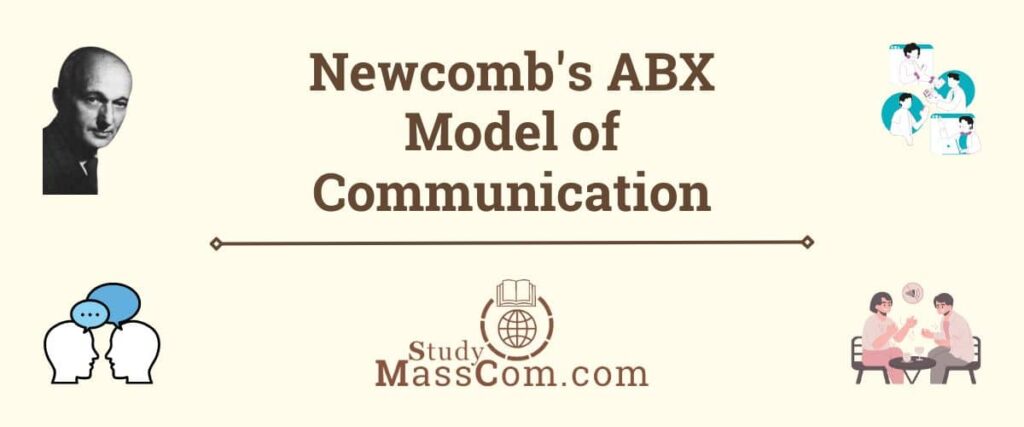
Background of Theodore M. Newcomb
Before delving into Newcomb’s model of communication, it’s essential to understand the background of its creator, Theodore M. Newcomb. Born in 1903, Newcomb made significant contributions to the field of social psychology. He completed his doctoral studies at the University of Chicago, where he was influenced by prominent psychologists like George Herbert Mead and Charles Horton Cooley. Newcomb’s work focused on understanding social behavior, group dynamics, and interpersonal relationships.
In the 1930s and 1940s, Newcomb conducted groundbreaking research on small-group communication and social influence. His studies, particularly those conducted at Bennington College in Vermont, laid the foundation for his model of communication. The culmination of his research efforts resulted in the development of a comprehensive framework that aimed to explain the complexities of human communication.
Understanding Newcomb’s ABX Model of Communication
Newcomb’s ABX model of communication is a triangular framework that emphasizes the dynamic and reciprocal nature of interpersonal communication. The model is represented by three main components: A, B, and X. Each component symbolizes a key element in the communication process:
Point A (Sender)
Represents the sender or source of the message. This could be an individual, group, or organization initiating communication.
Point B (Receiver)
Represents the receiver or destination of the message. This could be an individual, group, or organization intended to receive and interpret the message.
Point X (Message)
Represents the message itself, including the content, medium, and form of communication being transmitted from the sender to the receiver.
The triangular configuration of the ABX model visually illustrates the interconnectedness of these components and the dynamic exchange of messages between the sender and receiver.
Check out Berlo’s SMCR model of communication.
Diagram of Newcomb’s ABX Model of Communication
Imagine a triangle with three points labeled A, B, and X:
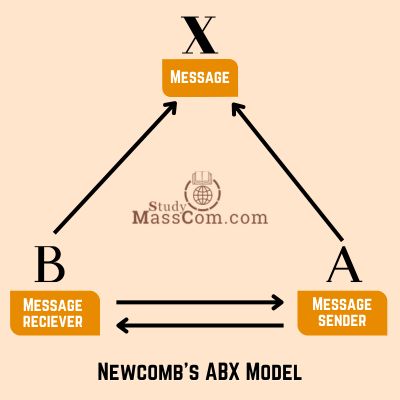
- Point A represents the sender or source of the message.
- Point B represents the receiver or destination of the message.
- Point X represents the message itself, including its content, form, and medium of communication.
Lines connect each point of the triangle, illustrating the dynamic exchange of messages between the sender, receiver, and the content of the message. This triangular configuration visually represents the interconnectedness of these components and the reciprocal nature of communication interactions in Newcomb’s ABX model.
Theoretical Foundations of Newcomb’s Model of Communication
Newcomb’s ABX model is grounded in the broader field of communication theory, drawing upon various theoretical perspectives to explain the dynamics of interpersonal communication. One theoretical foundation underlying the model is the transactional model of communication, which emphasizes the interactive and reciprocal nature of communication interactions. According to this perspective, communication is a dynamic process characterized by mutual influence and feedback between communicators.
Additionally, Newcomb’s model incorporates elements of field theory, a psychological framework developed by Kurt Lewin. Field theory posits that behavior is influenced by both individual characteristics and the surrounding environment, including social, cultural, and situational factors. In the context of communication, field theory underscores the importance of considering the broader social context and environmental factors that shape communication interactions.
What is the Gatekeeping Theory in mass communication? Learn more with us!
Key Components of Newcomb’s Model
Here are the key components of Newcomb’s ABX model of communication that include but are not limited to:
Sender (Point A)
The sender is the initiator of the communication process, responsible for encoding and transmitting the message to the receiver. This component encompasses factors such as the sender’s intentions, motivations, communication skills, and the context in which the message is sent. The sender’s ability to effectively convey their message and adapt their communication style to the receiver’s needs influences the success of the communication interaction.
Receiver (Point B)
The receiver is the intended recipient of the message, responsible for decoding and interpreting the message sent by the sender. This component encompasses factors such as the receiver’s perceptions, attitudes, beliefs, and communication competence. The receiver’s ability to accurately interpret and respond to the message influences the outcome of the communication interaction.
Message (Point X)
The message is the content, medium, and form of communication being transmitted from the sender to the receiver. This component encompasses verbal and nonverbal cues, symbols, language, and other communicative elements used to convey meaning. The clarity, relevance, and effectiveness of the message impact its reception and interpretation by the receiver.
Read about Gerbner’s model of communication.
Dynamic Interactions in Newcomb’s Model of Communication
One of the key features of Newcomb’s ABX model is its emphasis on the dynamic and reciprocal nature of communication interactions. The triangular configuration of the model illustrates the ongoing exchange of messages between the sender and receiver, with each component influencing and shaping the other.
Sender-Message Interaction
The sender’s characteristics, intentions, and communication style influence the content and form of the message being transmitted. The sender must encode the message in a way that is clear, coherent, and relevant to the intended receiver.
Message-Receiver Interaction
The message itself, including its content, language, and delivery, influences how the receiver interprets and responds to the communication. The receiver must decode the message, extracting meaning from the verbal and nonverbal cues conveyed by the sender.
Receiver-Sender Interaction
The receiver’s interpretation and response to the message provide feedback to the sender, shaping future communication interactions. This feedback loop enables adjustments and adaptations in communication strategies to enhance understanding and effectiveness.
Explore White’s communication model and its advantages and disadvantages.
Applications of Newcomb’s ABX Model of Communication
Newcomb’s ABX model has practical applications in various interpersonal communication contexts, including:
Interpersonal Relationships
The model helps individuals understand and navigate communication dynamics in personal relationships, such as friendships, romantic partnerships, and family interactions. By considering the sender, receiver, and message components, individuals can enhance their communication skills, resolve conflicts, and build stronger connections.
Group Communication
The model facilitates the analysis of communication interactions within groups, teams, and organizations. By examining the dynamics between senders and receivers, group members can improve collaboration, decision-making, and problem-solving processes.
Conflict Resolution
The model provides insights into communication dynamics during conflict situations, enabling individuals and mediators to identify barriers to effective communication and develop strategies for resolution. By understanding the interplay between senders, receivers, and messages, conflicting parties can engage in constructive dialogue and reach mutually acceptable solutions.
Cross-Cultural Communication
The model helps individuals navigate communication challenges in multicultural settings by considering the cultural, linguistic, and contextual factors that influence communication interactions. By recognizing the diversity of senders, receivers, and messages, individuals can adapt their communication strategies to bridge cultural differences and foster mutual understanding.
Also, read our comparative analysis of the Shannon-Weaver Model and Schramm’s Model.
Advantages of Newcomb’s Model of Communication
Newcomb’s ABX model of communication offers several advantages that contribute to its utility in understanding and analyzing interpersonal interactions. These advantages include:
Comprehensive Framework
Newcomb’s ABX model provides a comprehensive framework that encompasses key components of communication—sender, receiver, and message. This holistic approach allows for a thorough analysis of communication dynamics, considering the interplay between these elements.
Dynamic Nature of Communication
The model emphasizes the dynamic and reciprocal nature of communication interactions. By illustrating the ongoing exchange of messages between the sender and receiver, the model acknowledges that communication is a fluid process influenced by feedback, adjustments, and evolving relationships.
Explore the seven vital steps in any communication process.
Visual Representation
The triangular configuration of the ABX model offers a visual representation of communication dynamics. This visual aid helps individuals and scholars conceptualize the relationships between senders, receivers, and messages, making it easier to understand and apply in various contexts.
Incorporation of Field Theory
Newcomb’s model incorporates elements of field theory, emphasizing the influence of both individual characteristics and the broader social environment on communication. This integration enhances the model’s applicability to diverse settings by considering the impact of social systems, cultural norms, and situational factors.
Adaptability to Different Contexts
The model is adaptable to a wide range of communication contexts, including interpersonal relationships, group communication, conflict resolution, and cross-cultural interactions. Its flexibility allows individuals to apply the model to diverse scenarios, making it relevant in various personal and professional settings.
Guidance for Effective Communication
By highlighting the importance of the sender, receiver, and message components, the ABX model provides guidance for effective communication. Individuals can use the model to improve their communication skills, tailor messages to specific audiences, and navigate complex interpersonal dynamics.
Feedback Loop Integration
The model incorporates a feedback loop, recognizing that the receiver’s interpretation and response to the message influence future communication interactions. This feedback mechanism enables continuous adjustments, fostering better understanding and reducing miscommunication.
Relevance in Digital Communication
In an era dominated by digital communication, Newcomb’s ABX model remains relevant. The model can be applied to analyze interactions on social media, email, and other online platforms, considering the sender, receiver, and message components in the context of virtual communication.
Insights into Cross-Cultural Communication
Newcomb’s model facilitates insights into cross-cultural communication by acknowledging the influence of cultural norms and diversity in communication styles. This aspect is particularly valuable in today’s globalized world, where individuals from different cultural backgrounds interact regularly.
Foundation for Research and Education
The ABX model serves as a foundational framework for communication research and education. Scholars and educators use the model to conduct studies, develop communication theories, and teach students about the complexities of interpersonal communication.
In summary, Newcomb’s ABX model of communication offers several advantages, including its comprehensive framework, emphasis on the dynamic nature of communication, visual representation, incorporation of field theory, adaptability to different contexts, guidance for effective communication, integration of a feedback loop, relevance in digital communication, insights into cross-cultural communication, and its role as a foundation for research and education.
Read about Lasswell’s model of communication.
Disadvantages of Newcomb’s Model of Communication
While Newcomb’s ABX model of communication offers valuable insights into interpersonal interaction, it also has certain limitations and disadvantages that warrant consideration. These disadvantages include:
Simplicity and Generalization
One criticism of the ABX model is its simplicity, which may lead to oversimplification of communication dynamics. The model’s focus on three main components—sender, receiver, and message—may overlook the complexity of real-world communication interactions, including factors such as context, feedback, and noise.
Limited Emphasis on Context
The ABX model may not adequately account for the influence of context on communication dynamics. While the model acknowledges the importance of sender, receiver, and message components, it may neglect the broader social, cultural, and situational factors that shape communication interactions.
Static Representation
The triangular configuration of the ABX model may present a static representation of communication dynamics. In reality, communication interactions are dynamic and fluid, involving continuous exchanges of messages between senders and receivers. The model’s static representation may oversimplify the complexity of these interactions.
Neglect of Nonverbal Communication
The ABX model may not sufficiently address the role of nonverbal communication in interpersonal interactions. While the model focuses on the message component, it may not fully account for the impact of nonverbal cues such as body language, facial expressions, and tone of voice on communication effectiveness.
Limited Predictive Power
The ABX model may have limited predictive power in certain contexts. While the model provides a framework for understanding communication interactions, it may not accurately predict specific communication outcomes or behaviors, particularly in complex or dynamic situations.
Neglect of Individual Differences
The ABX model may overlook individual differences in communication styles, preferences, and psychological factors. While the model considers the sender and receiver components, it may not adequately account for the unique characteristics and motivations of individual communicators.
Potential for Misinterpretation
The simplicity of the ABX model may lead to misinterpretation or oversimplification of communication interactions. Individuals may mistakenly assume that communication dynamics can be fully explained by the model’s three main components, overlooking the complexity of real-world communication scenarios.
Lack of Guidance for Message Encoding and Decoding
While the ABX model acknowledges the importance of the message component, it may not provide specific guidance for message encoding and decoding. Individuals may struggle to translate their thoughts and intentions into clear and effective messages or to accurately interpret messages received from others.
Limited Cultural Sensitivity
The ABX model may not adequately address the cultural nuances and variations in communication styles across different cultural groups. While the model can be applied in diverse contexts, its universal applicability may overlook the cultural diversity and complexity of communication interactions.
Overemphasis on Linear Process
The ABX model may overemphasize the linear nature of communication processes, which may not fully capture the complexity of real-world interactions. In reality, communication interactions often involve multiple feedback loops, interruptions, and non-linear exchanges of messages between senders and receivers.
In summary, while Newcomb’s ABX model of communication offers valuable insights into interpersonal interaction, it also has several limitations and disadvantages. These include its simplicity and generalization, limited emphasis on context, static representation, neglect of nonverbal communication, limited predictive power, neglect of individual differences, the potential for misinterpretation, lack of guidance for message encoding and decoding, limited cultural sensitivity, and overemphasis on the linear process. Despite these drawbacks, the model remains a useful framework for understanding communication dynamics, when used in conjunction with other theoretical perspectives and considerations.
Explore the pros and cons of Aristotle’s communication model.
Relevance of Newcomb’s Model of Communication
Despite being developed several decades ago, Newcomb’s ABX model remains relevant in contemporary communication contexts. In an era characterized by technological advancements, globalization, and diverse communication platforms, the model offers valuable insights into the dynamics of interpersonal interaction.
Digital Communication
The model can be applied to analyze communication interactions in digital environments, such as social media, email, and instant messaging. By considering the sender, receiver, and message components, individuals can navigate online communication dynamics, including virtual relationships, digital etiquette, and online conflict resolution.
Remote Work Environments
In remote work settings, the model helps individuals understand communication dynamics within virtual teams and distributed organizations. By examining the sender, receiver, and message components, remote workers can enhance communication effectiveness, collaboration, and productivity in virtual workspaces.
Crisis Communication
During times of crisis or emergency, the model provides a framework for analyzing communication interactions between stakeholders, such as government agencies, media outlets, and the public. By considering the sender, receiver, and message components, crisis communicators can tailor their messages to address the needs and concerns of diverse audiences, facilitate information dissemination, and mitigate misinformation.
Learn about the strengths and weaknesses of the Transactional model of communication.
Examples of Newcomb’s Model of Communication
Examples of Newcomb’s ABX model of communication can be observed in various interpersonal interactions and communication scenarios. These examples illustrate how the model’s key components—sender (A), receiver (B), and message (X)—interact dynamically to shape communication dynamics. Here are some examples:
Personal Conversation
Sender (A): Sarah wants to share her exciting news about a job promotion with her friend, Emily.
Message (X): Sarah crafts a message conveying her excitement about the promotion, including details about her new role and responsibilities.
Receiver (B): Emily receives Sarah’s message and responds with enthusiasm, congratulating her friend on the achievement.
Email Communication in the Workplace
Sender (A): John, a project manager, sends an email to his team members announcing a change in project deadlines.
Message (X): John’s email explains the reasons for the deadline change, outlines revised timelines and provides instructions for adjusting project schedules.
Receiver (B): Team members receive John’s email and respond with questions, concerns, or acknowledgment of the changes.
Public Speech
Sender (A): The mayor delivers a public speech addressing citizens’ concerns about public safety in the community.
Message (X): The mayor’s speech outlines initiatives to improve public safety, including increased police presence, community outreach programs, and neighborhood watch initiatives.
Receiver (B): Community members in attendance listen to the mayor’s speech and respond with feedback, questions, or expressions of support for the proposed initiatives.
Social Media Interaction
Sender (A): Mark shares a post on social media expressing his views on environmental conservation.
Message (X): Mark’s post includes information about the importance of protecting the environment, along with suggestions for reducing carbon footprint.
Receiver (B): Mark’s social media followers engage with the post by liking, commenting, or sharing it, expressing their agreement, disagreement, or additional thoughts on the topic.
Interpersonal Conflict Resolution
Sender (A): Sam initiates a conversation with his roommate, Alex, to address an ongoing conflict about household chores.
Message (X): Sam communicates his concerns about the unequal distribution of household responsibilities and proposes a solution for dividing chores more equitably.
Receiver (B): Alex listens to Sam’s message, responds with his perspective on the issue, and collaborates with Sam to find a mutually acceptable resolution to the conflict.
Cross-Cultural Communication
Sender (A): Maria, an international student, engages in a conversation with her classmates from different cultural backgrounds.
Message (X): Maria communicates her thoughts and experiences about adjusting to life in a new country, including the challenges she has faced and the cultural differences she has observed.
Receiver (B): Maria’s classmates listen to her message, ask questions to better understand her perspective, and share their own experiences to foster cross-cultural understanding and empathy.
These examples demonstrate how Newcomb’s ABX model of communication applies to various interpersonal interactions and communication contexts, illustrating the dynamic exchange of messages between senders and receivers in real-life scenarios.
Explore the differences between Cultivation Theory and Agenda-Setting Theory.
Conclusion
Newcomb’s ABX model of communication offers a comprehensive framework for understanding the dynamics of interpersonal interaction. By emphasizing the sender, receiver, and message components, as well as their dynamic interactions, the model provides insights into the complexities of communication processes. From personal relationships to organizational communication, conflict resolution, and cross-cultural interactions, the model has practical applications in diverse contexts. In an increasingly interconnected world, Newcomb’s ABX model remains a valuable tool for enhancing communication effectiveness, fostering mutual understanding, and building meaningful connections among individuals and groups.
Explore more Mass Communication theories and models.
FAQs
Newcomb’s model of communication is a comprehensive framework developed by Theodore M. Newcomb, emphasizing the dynamic nature of interpersonal communication. It incorporates multiple factors, including levels of communication, social context, and the influence of social systems, to provide insights into the complexities of human interaction. The model recognizes that communication is shaped by various factors and operates across different levels, from superficial exchanges to deeper interactions. By considering the reciprocal relationship between individuals and their social environments, Newcomb’s model offers a nuanced understanding of communication dynamics in diverse contexts.
The importance of Newcomb’s communication model lies in its comprehensive framework, which considers multiple factors influencing interpersonal communication. By emphasizing the dynamic nature of communication, levels of interaction, social context, and the influence of social systems, the model offers valuable insights into the complexities of human interaction. It provides a nuanced understanding of communication dynamics in diverse contexts, including interpersonal relationships, group dynamics, cross-cultural communication, and conflict resolution. Newcomb’s model serves as a foundational framework for understanding and analyzing communication processes, contributing to effective communication strategies, and fostering meaningful connections in various interpersonal and organizational settings.
Yes, Newcomb’s ABX model of communication is triangular. It consists of three main components represented as points on a triangle: A, B, and X. Point A represents the sender or source of the message, point B represents the receiver or destination of the message, and point X represents the message itself. The triangular configuration visually represents the dynamic exchange of messages between the sender, receiver, and the content of the message. This triangular structure helps illustrate the interconnectedness of these components and the reciprocal nature of communication processes in Newcomb’s model.

